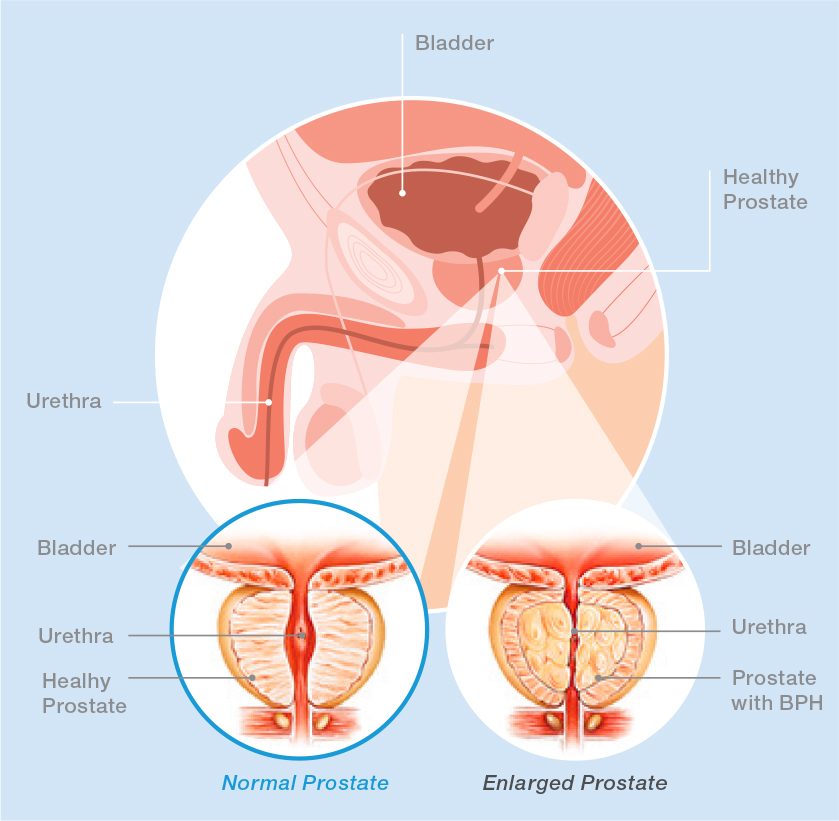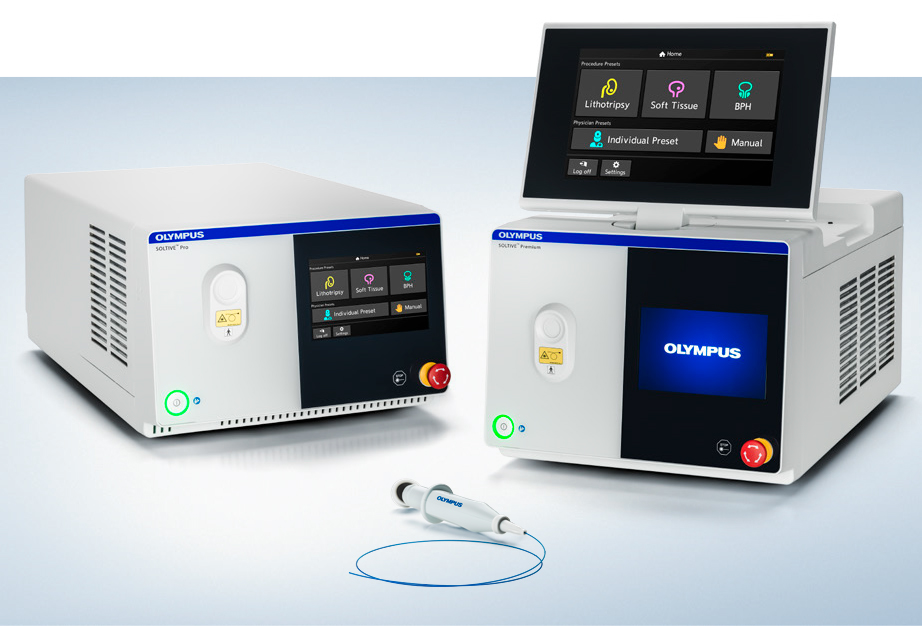BPH is an enlarged prostate that can lead to frequent trips to the bathroom and interrupted sleep. Medicines for this condition does not work for everyone, can be expensive, and may have unpleasant side effects.1
If this sounds like you, it’s time to take action. There are more treatment options today than ever before.
The SOLTIVE™ Laser represents the cutting edge of laser technology available to treat BPH. SOLTIVE™ gives your surgeon impressive control and precision for all tissue procedures including BPH, allowing you the quick relief you need and deserve.2
If you have additional questions, please be sure to ask Dr. Diamon.
What Is SOLTIVE™ Laser Therapy?
The SOLTIVE™ Laser is fast becoming the laser of choice for urologists.3
Lasers are used in many areas of medicine. In urology, lasers are commonly used to treat kidney stones, tumors and enlarged prostates. During a BPH laser therapy procedure, enlarged prostatic tissue is rapidly heated and vaporized. Natural urine flow is restored in most patients. Typically, BPH laser procedures are performed as a same-day surgery but an overnight stay may be recommended for some patients. Many patients can go home without a urinary catheter.4

Top: Anatomy of the male reproductive system.
Bottom: Anatomy of an enlarged prostate gland. Arrows represent pressure on the urethra.
What Happens During Laser Therapy?
The following is intended as a general overview. Your experience may differ. SOLTIVE Laser Therapy risks are identified in this brochure. Please discuss these risks along with any questions you may have with your physician.
1. Before treatment begins, you may be asked to empty your bladder.
2. You will then be brought into the procedure room and moved to the treatment bed where you will lie on your back. Your doctor may give you a medication to help you relax.
3. The procedure is typically performed under general anesthesia and you will be asleep. Once the anesthesia takes effect, your doctor will insert a small scope into your urethra. The scope allows your doctor to see the inner surfaces of the urethra, prostate and bladder.
4. After the scope is in place, your doctor will use a small SOLTIVE™ laser fiber to vaporize the prostate tissue that is obstructing urine flow. Prostate tissue that is not immediately vaporized during the procedure will be passed naturally in your urine during the first few days after your surgery.
5. A temporary urinary catheter may be placed at the end of the procedure to let urine drain from your bladder. In some instances you may see blood or blood clots in your urine following the treatment.
The SOLTIVE™ Advantage
Compared with other surgical options, SOLTIVE™ Laser Therapy can contribute to:
- Significantly less chance of bleeding2
- Lower risk of thermal injury due to SOLTIVETM’s low power output (60W) vs. other prostate lasers (120W to 200W)
- Same-day surgery in most cases
- Chance of faster recovery and discharge due to the potential of less bleeding and a shorter catheterization time

Questions & Answers
What are the risks?
Every surgical procedure has some level of risk, including SOLTIVE™ Laser Therapy. The most common complications for all BPH laser therapies can include:6,7,8
- Hematuria (blood in urine)
- Irritation of the bladder, resulting in frequent and/or urgent urination
- Irritation of the urethra, resulting in frequent urination and/or a burning sensation
- Retrograde ejaculation: semen during sexual climax travels backward to the bladder rather than exiting the penis
Do I have to stay in the hospital after a SOLTIVE™ Laser Therapy procedure?
SOLTIVE™ Laser Therapy is generally performed as a same-day surgical procedure. An overnight stay in the hospital is most likely not required.
Will the procedure effect my sexual function?
Clinical studies on other laser modalities have reported very high rates (85% or higher) of patients reporting improved or unchanged sexual satisfaction with 14% reporting a decline. Similar outcomes have been observed with erectile function.5 Because the technology is new, no clinical papers are published yet on outcomes of SOLTIVE™ prostate vaporization procedures.
References:
- Yu, Zhao-Jun et al. “Efficacy and Side Effects of Drugs Commonly Used for the Treatment of Lower Urinary Tract Symptoms Associated With Benign Prostatic Hyperplasia.” Frontiers in pharmacology vol. 11 658. 8 May. 2020, doi:10.3389/fphar.2020.00658.
- Data on file with Olympus.
- Laser adoption data on file with Olympus.
- Benejam Gual J, Servera Ruiz de Velasco A, Hernández Martínez Y, García-Miralles Grávalos R. Greenlight laser vaporization: Past, present and future?. Arch Esp Urol. 2020 Oct;73(8):675-681. Spanish. PMID: 33025912.
- Lukacs B, Loeffler J, Bruyère F, et al. Photoselective vaporization of the prostate with GreenLight 120-W laser compared with monopolar transurethral resection of the prostate: A multicenter randomized controlled trial. Eur Urol. 2012;61(6):1165-73.
- Bachmann A, Tubaro A, Barber N, et al. 180-W XPS GreenLight laser vaporization versus transurethral resection of the prostate for the treatment of benign prostatic obstruction: 6 month safety and efficacy results of the European multi-centre randomized trial – The GOLIATH Study. Eur Urol. November 12, 2013.
- Bouchier-Hayes DM, Van Appledorn S, Bugeja P, et al. A randomized trial of photoselective vaporization of the prostate using the 80-W potassium titanyl-phosphate laser vs transurethral prostatectomy, with a 1-year follow-up. BJU Int. 2010 Apr;105(7):964-9.
- Ajib K, Mansour M, Zanaty M, et al. Photoselective vaporization of the prostate with the 180-W XPS-Greenlight laser: Five-year experience of safety, efficiency, and functional outcomes. Can Urol Assoc J. 2018 Jul;12(7):E318-E324.


